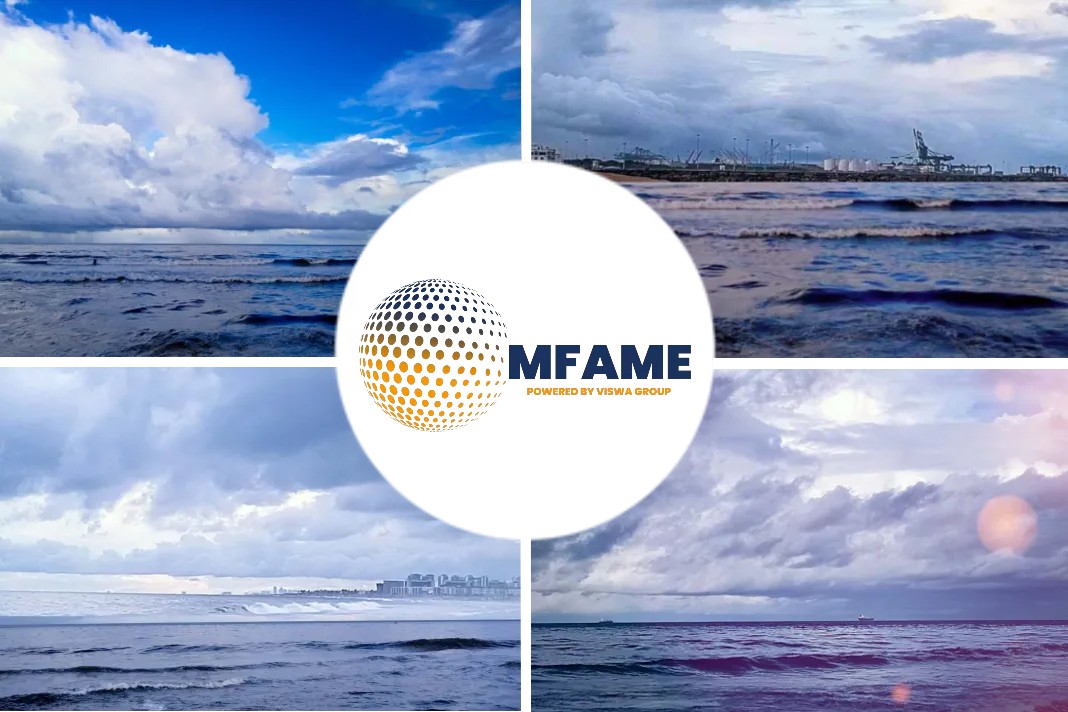- Gate rudder technology lowers fuel consumption and reduces emissions
- Better manoeuvrability & course stability in both calm and rough seas
- An innovative design that reduces noise and vibrations
In a major development, the technology group Wärtsilä with the consent of all joint Japanese patent holders developing gate rudder technology has announced the signing of a Licence and Co-operation Agreement with Kuribayashi Steamship Co for future development, sales and servicing of the gate rudders, says an article published on their website.

In addition to Kuribayashi Steamship Co, the other patent holders are Kamome Propeller, the National Institute of Maritime, Port and Aviation Technology (NIMPAT, Japan), Yamanaka Shipbuilding, and Professor Noriyuki Sasaki.
Integrating Gate Rudders
As an authorised license holder and partner, Wärtsilä intends to fully integrate gate rudders within its propulsion product designs and focus on global markets outside Japan. The agreement was signed on 28 February 2020.
- By offering gate rudders as an integral part of Wärtsilä’s propulsion offerings for newbuild vessels, compliance with the Energy Efficiency Design Index (EEDI) will be further facilitated.
- The technology is available for both new build and existing vessels.
- As an integral part of the design, it will realise synergies in capital and operational savings for ship owners by increasing fuel efficiency, improving manoeuvrability and course stability in both calm and rough sea conditions, while also reducing noise and vibration.
Accelerating Gate Rudder System in Vessels
This new collaborative partnership will accelerate the deployment of gate rudder systems across all vessel classes. By combining Wärtsilä’s propulsion and machinery integration expertise with the Japanese patent holders’ gate rudder technology and know-how, this new technology will become accessible throughout the marine sector, with ship owners benefiting from the technology concepts.
Wartsila’s Outlook
Speaking on the agreement, Lars Anderson, Director, Propulsion, Wärtsilä Marine, said:
“At Wärtsilä we are doing our outmost to support our customers as they look for new technologies to reduce operating costs and improve the environmental sustainability of their operations.
We see great potential in this gate rudder technology collaboration.
Today’s agreement enables us to support the building of better and more sustainable vessels already today, and Kuribayashi Steamship and the Japanese patent holders are the ideal partners to help us realise this goal.”
Kuribayashi’s Outlook
Sadatomo Kuribayashi, Chairman of Kuribayashi Steamship Co. Ltd., added: “Today’s agreement with Wärtsilä is a major step forward in introducing gate rudder technology to the global market, and it helps the shipping industry’s initiatives for sustainable shipping and reduced operating costs. An innovative approach has been taken in creating this new solution for the maritime industry. The first evaluations of vessel performance on Japanese coastal vessels have shown a significant improvement in efficiency and manoeuvrability. We see Wärtsilä, with a strong global presence, and sharing the same commitment for developing cleaner, more sustainable, and efficient marine shipping, as being the ideal partner.”
The Gate Rudder System Benefit
Instead of the traditional rudder arrangement in the propeller slipstream, the gate rudder is a twin arrangement around the propeller, allowing improved fuel efficiency and reduced emissions. The concept is applicable to all current vessels equipped with conventional propellers.
About the Japanese Gate Rudder patent holders
Kuribayashi Steamship is a leader in the Japanese coastal shipping industry and provides the related transportation services not limited to sea transportation, but also truck transportation on land. Established in 1919, Kuribayashi is listed on the second section of Tokyo Stock Exchange.
Kay Seven Co., Ltd, the group company of Kuribayashi, which has been inventing and implementing new technology on a variety of equipment, plays the key role in materializing Gate Rudder Technology. Kay Seven is the patentee of the related IPR.
Professor Noriyuki Sasaki has been conducting a variety of research and development projects at various well-known maritime companies and at research institutes. He’s been developing unique concepts at hydrodynamics field and researched Gate Rudder technology with the collaboration of other patent holders in Japan. Dr. Noriyuki Sasaki is the professor of University of Strathclyde and the advisory to Kuribayashi.
Kamome Propeller is a leader in propeller manufacturing and provides power saving equipment and services around propellers, including control systems. Since its establishment in 1924, Kamome Propeller has been always providing cutting edge propellers to the Japanese maritime industry.
National Institute of Maritime, Port and Aviation Technology is a Japanese national research institute under the Ministry of Land, Infrastructure, Transport and Tourism. It has the National Maritime Research Institute within its organisation, which supported the materialization of Gate Rudder technology.
Yamanaka Shipbuilding has been providing the unique “Eco-Ship” concept, which enables efficient operations at reasonable production cost by applying standardization in design and in the integration of a variety of equipment. Founded in 1951, the company has the capacity to build approximately 20 vessels at the size of 499GT, which represents the majority of Japanese coastal vessels.
Did you subscribe to our daily newsletter?
It’s Free! Click here to Subscribe!
Source: Wartsila
















